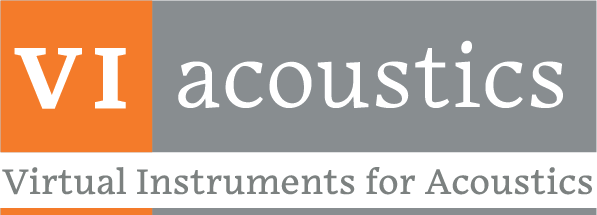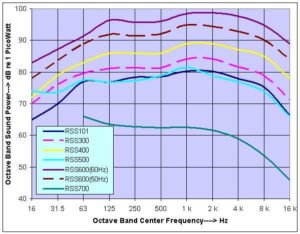Overview
Designed and built according to ISO 6926 and ANSI S12.5.
For routine use in the following Comparison Sound Power Determination Methods:
ANSI S12.51, S12.53, S12.54, S12.56, S12.57, ISO 3741, 3743, 3744, 3746, 3747, 11690, 14257, AMCA 300, AHRI 250, ASTM F1334
RSS-400: A-Weighted PWL = 94.0 dB(A) re one Picowatt
The original Acculab Reference Sound Source (RSS) was first developed in 1982 by Angelo Campanella. After Dr. Campanella’s passing VIacoustics took up production of the Acculab RSS series to continue to provide an affordable RSS to the acoustics community.
The device called a “reference sound source” is used throughout industry and engineering where it is necessary to determine the amount of noise (sound power) that is emitted by a device (fan, vacuum cleaner, engine, etc.) into the surrounding environment. Though it is possible to do so by extensive sound level measurements in a controlled (lab) environment, such a process is tedious and uncertain without extensive calibrated acoustical equipment and certified procedures.
On the other hand, the much simpler “substitution (comparison) method” is possible, where the device under test (DUT) is operated in its natural environment while conventional sound pressure level (SPL) measurements are made around the DUT. The DUT is then shut off. The “Reference Sound Source” (RSS) is placed next to the inoperative DUT, switched on, and the SPL is again measured in the same way as before. The RSS sound power output has previously been calibrated by precise methods, so the sound power of the device under test is simply calculated as
DUT.PWL = DUT.SPL – RSS.SPL + RSS.CAL , dB re one Picowatt.
[One Picowatt = 10^(-12) watts.]
Features
Pricing
With standard performance data (not individually calibrated): $3,400 FOB Austin, TX.
Includes a ship and carry case.
ISO 17025 accredited calibration per ISO 6926 / ANSI S12.5: $2,885.

